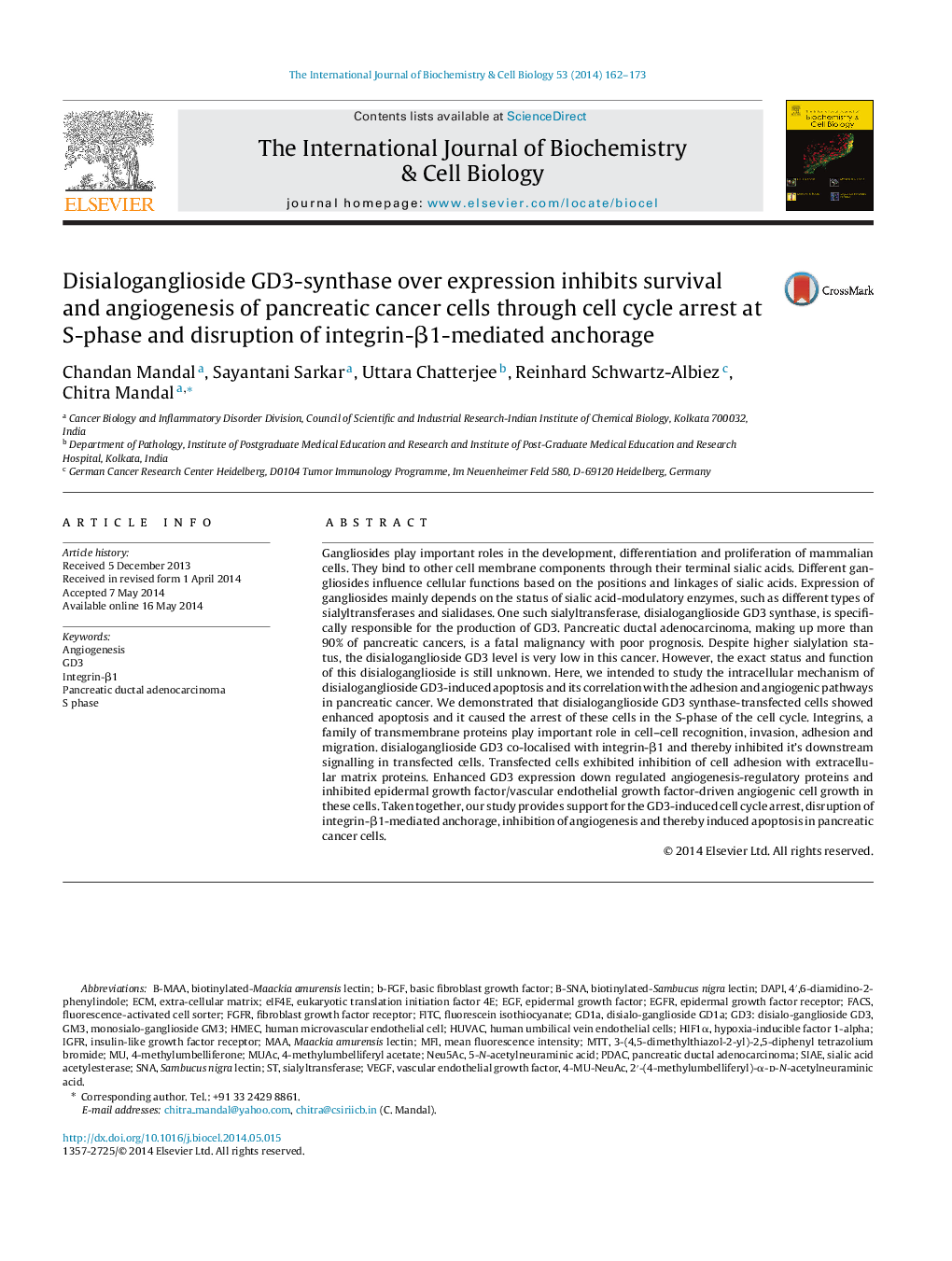| Article ID | Journal | Published Year | Pages | File Type |
|---|---|---|---|---|
| 8323383 | The International Journal of Biochemistry & Cell Biology | 2014 | 12 Pages |
Abstract
Gangliosides play important roles in the development, differentiation and proliferation of mammalian cells. They bind to other cell membrane components through their terminal sialic acids. Different gangliosides influence cellular functions based on the positions and linkages of sialic acids. Expression of gangliosides mainly depends on the status of sialic acid-modulatory enzymes, such as different types of sialyltransferases and sialidases. One such sialyltransferase, disialoganglioside GD3 synthase, is specifically responsible for the production of GD3. Pancreatic ductal adenocarcinoma, making up more than 90% of pancreatic cancers, is a fatal malignancy with poor prognosis. Despite higher sialylation status, the disialoganglioside GD3 level is very low in this cancer. However, the exact status and function of this disialoganglioside is still unknown. Here, we intended to study the intracellular mechanism of disialoganglioside GD3-induced apoptosis and its correlation with the adhesion and angiogenic pathways in pancreatic cancer. We demonstrated that disialoganglioside GD3 synthase-transfected cells showed enhanced apoptosis and it caused the arrest of these cells in the S-phase of the cell cycle. Integrins, a family of transmembrane proteins play important role in cell-cell recognition, invasion, adhesion and migration. disialoganglioside GD3 co-localised with integrin-β1 and thereby inhibited it's downstream signalling in transfected cells. Transfected cells exhibited inhibition of cell adhesion with extracellular matrix proteins. Enhanced GD3 expression down regulated angiogenesis-regulatory proteins and inhibited epidermal growth factor/vascular endothelial growth factor-driven angiogenic cell growth in these cells. Taken together, our study provides support for the GD3-induced cell cycle arrest, disruption of integrin-β1-mediated anchorage, inhibition of angiogenesis and thereby induced apoptosis in pancreatic cancer cells.
Keywords
MAAMaackia amurensis lectinSambucus nigra lectinGD1ab-FGF4-methylumbelliferoneHIF1αGD3MUACeIF4EFGFRECMSNADAPINeu5AcFACSHMECMFIFITCEGFEGFR3-(4,5-dimethylthiazol-2-yl)-2,5-diphenyl tetrazolium bromide4′,6-diamidino-2-phenylindoleeukaryotic translation initiation factor 4EiGFRMTTPancreatic ductal adenocarcinomaPDAC یا pancreatic ductal adenocarcinomaAngiogenesishuman microvascular endothelial cellHuman umbilical vein endothelial cellsSialyltransferasehypoxia-inducible factor 1-alphaepidermal growth factorS phaseVascular Endothelial Growth Factor (VEGF)basic fibroblast growth factorfluorescein isothiocyanatefluorescence-activated cell sorterextra-cellular matrixmean fluorescence intensityEpidermal growth factor receptorfibroblast growth factor receptorInsulin-like growth factor receptor
Related Topics
Life Sciences
Biochemistry, Genetics and Molecular Biology
Biochemistry
Authors
Chandan Mandal, Sayantani Sarkar, Uttara Chatterjee, Reinhard Schwartz-Albiez, Chitra Mandal,
